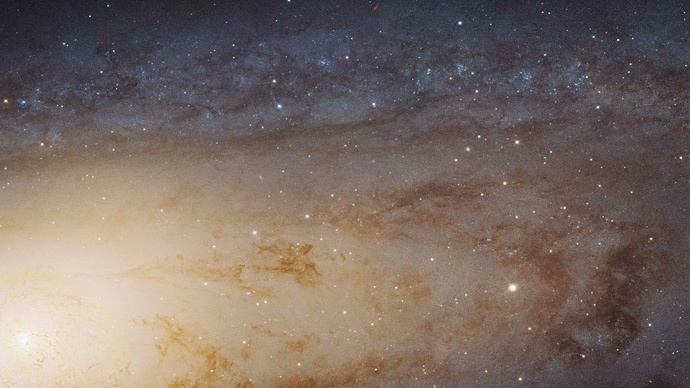Astrophysicists come up with most complete 3D map of universe

Astrophysicists from the University of Waterloo have managed to create the best yet 3D map of the universe. It spans almost two billion light years and it is hoped it could help better understand how space is expanding and give insights into dark matter.
A white cross marks the Milky Way galaxy, which is home to planet Earth. Regions with a number of galaxies are marked in light blue or white, while the red area is the Shapley Concentration, which has a huge number of galaxies in very close proximity to one another.
Astrophysicists create 3D map of the universe that spans ~2 billion light years #spacehttps://t.co/2EYHw3IBNepic.twitter.com/CqDuL5Hsc1
— Mark Hilverda (@markhilverda) April 27, 2015
In contrast the dark blue areas have few galaxies. The edge of the map, which is a uniformed blue color has not been explored yet.
Even though humans will not visit deep space anytime soon, having a map will prove useful because it will be able to show how the universe is expanding. Scientists have found that galaxies move differently. Our Milky Way and its neighbor Andromeda are, for example, moving with a speed of two million kilometers per hour.
Professor Michael Hudson, Jonathan Carrick and Stephan Turnbull from the Department of Physics and Astronomy at the University of Waterloo and Guilhem Lavaux of the Institute d'Astrophysique de Paris, created the map.
"The galaxy distribution isn't uniform and has no pattern. It has peaks and valleys much like a mountain range. This is what we expect if the large-scale structure originates from quantum fluctuations in the early universe," said Hudson, according to Phys.org.
#UWaterloo astrophysicists create the most comprehensive 3D map of the universe to date. http://t.co/b1sHVi5Vah
— University Waterloo (@UWaterloo) April 27, 2015
The map also gives clues to astrophysicists about how much dark matter may exist. Dark matter is one of the great mysteries of physics. It accounts for a large quantity of the mass content in the universe. It does not reflect or emit light, so therefore it is very difficult to measure. The only way it is possible to detect the existence of dark matter is through its gravitational effects on visible matter.
"A better understanding of dark matter is central to understanding the formation of galaxies and the structures they live in, such as galaxy clusters, superclusters and voids," Phys.org cited Hudson as saying.












